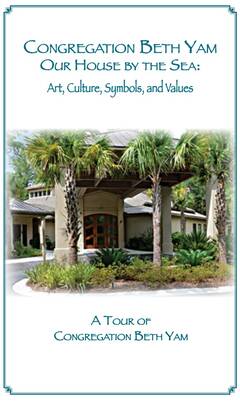Update this content.
Update this content.
Our sanctuary
As you enter the Sanctuary there is a niche o n the left wall that houses our Holocaust Torah, that was rescued from Czechoslovakia after World War II. This Torah is used by our congregation in ritual life and on special occasions. This remembrance of unparalleled tragedy in human history inspires us because it, like the Jewish people, survived. We feel privileged to be a congregation that received one of these special Torahs.
n the left wall that houses our Holocaust Torah, that was rescued from Czechoslovakia after World War II. This Torah is used by our congregation in ritual life and on special occasions. This remembrance of unparalleled tragedy in human history inspires us because it, like the Jewish people, survived. We feel privileged to be a congregation that received one of these special Torahs.
Inside the sanctuary, our uniquely designed ark doors represent the words L’Chaim, “to life.” Although the design concept was a tree of life with two figures pulling from and giving to the tree, the abstract design incites the viewer to experience their own emotional response. The depth of this work, both the carving and the shading, create a sculpture that seamlessly transcends time. The ner tamid, above the ark represents the eternal flame that Moses instructed the Hebrews to burn continually near the Ark of the Covenant as a symbol of the eternal nature of our covenant with God.
The bimah, from the Hebrew word for “high place” is the platform upon which the prayer leader stands to conduct services. It is like a mountain or altar, symbolizing access to the divine and is the spiritual center of the synagogue. Our curved bimah is of Jerusalem stone, styled like the Western Wall, the remains of the great Jewish Temple, which stood approximately 1,000 years before it’s destruction in 70 C.E. The Hebrew words etched in the stone above the ark constitute the priestly blessing (from Numbers 6:23), “May God bless you and keep you,” welcoming all into the House of Worship. The Torah tells us that these are the words that God commanded the kohanim (priests) to use to bless the people.
A contemporary menorah, one of the oldest symbols of the Jewish faith stands near the bimah. The first one was the candelabrum that God commanded the Jewish people to place in the Ark during the Exodus and then in the Temple (from Exodus 25:31-40). It is the offcial emblem of the state of Israel. The main inscription at the bottom of that menorah is from Zechariah 4:1-6. Zechariah sees a menorah, and God explains: “Not by might, nor by power, but by My spirit.” The message on this menorah is that Israel is to accomplish its mission by setting an example, not by using force.
The crackled glass windows at the sides of the bimah symbolize rushing water. Water, the symbol of life played a large part in the life of the Hebrews in biblical times and still today in Israel. The Sea of Reeds saved the Hebrews from the Egyptian soldiers; immediately after the death of Miriam, God gave water in the form of a spring to the Hebrews. The cupola brings natural light into the sanctuary and is lined with the wood from our original building, helping us remember our heritage at Congregation Beth Yam.
We are fortunate to have a Megillat Esther, a Scroll of Esther to read on Purim, the Feast of Lots. This scroll, hand written on goat skin, a North African tradition, was designed especially for our congregation. It is housed in a unique container with a hand painted scene of the ancient city of Shushan. It is a mitzvah to read the scroll which contains the story of the bravery of Esther and Mordechai, who saved the Jewish people from the evil Haman in ancient Persia.
The yahrzeit boards are a constant reminder of deceased loved ones. Judaism places great value on the ritual and prayers for remembering our loved ones who have passed away. The built-in kippot and tallit niches are here for those to use if it so suits one’s worship style. The tallit reminds us of performing Judaism’s 613 commandments or mitzvoth. The kippah is a head covering representing our respect for God’s presence in the worship service and our lives.
We have prepared a wonderful Tour Guide of our Synagogue that shows you how our building’s architecture, art, culture, and symbols represent the values, mission, and vision of our congregation.


